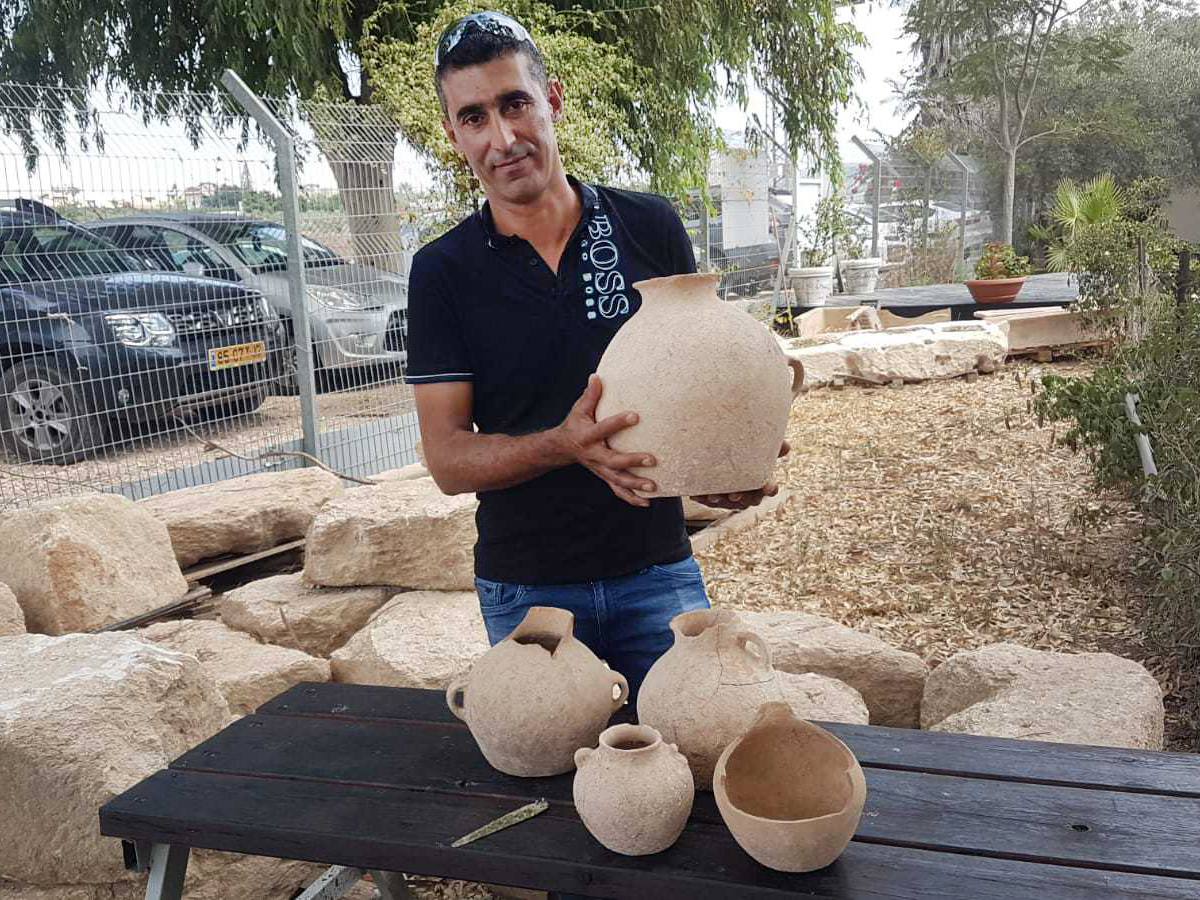Electrician finds copper dagger and ceramic jars from period previously unrepresented in northern area.
Ahmed Nassar Yassin, a resident of the northern village of Araba, made an exciting and unexpected discovery while out on a business call last weekend. An electrician by profession, Ahmed was walking along Araba’s dirt road on his way to fix a local’s electricity, when he spotted something in the mountain ridge. To his surprise, the rock crumbled away at his touch, revealing a copper dagger blade and a collection of whole ceramic vessels.
Ahmed Nassar Yassin and the 4500-year-old artifacts. Courtesy, Israel Antiquities Authority.
Fearing that the exposed artifacts might be damaged if he left them, Ahmed collected the artifacts carefully, brought them home, and contacted the Israel Antiquities Authority (IAA). It wasn’t long before Nir Distelfeld, an inspector with the IAA’s Theft Prevention Unit, arrived at Ahmed’s house to examine and collect the exciting discovery. According to Distelfeld’s analysis of the artifacts, they are about 4,500 years old, belonging to the Intermediate Bronze Age. This is significant because the Intermediate Bronze Age was formerly unrepresented in the archaeological record of that area. Distelfeld said, “Ahmed uncovered a period previously unknown in our research of this area.”
The area where the artifacts and ancient burial cave were discovered. Courtesy, Israel Antiquities Authority.
The artifact collection includes containers, storage jars and pouring vessels with rounded bodies characteristic of northern pottery during the Intermediate Bronze Age. The copper dagger blade is also characteristic of that period, and would have once been fastened with nails to a wooden handle. “It was common practice” Distelfeld says, “to place the weapons into its dead owner's grave.” Distelfeld believes the artifacts were part of a burial assemblage exposed due to some mechanical tool which caused previous damage to the burial cave. The artifacts, he says, “were placed in the burial cave together with the dead buried there to accompany and serve them in the afterlife - typical of burial procedures at this period.”
The 4500-year-old artifacts. Courtesy, Israel Antiquities Authority.
Ahmed received a Certificate of Good Citizenship, but not everyone was pleased he chose to hand the artifacts over to the IAA. Ahmed told Distelfeld that some people called him a dupe and traitor for doing so. Nonetheless, Distelfeld says “Ahmed realized that this was not his private property, but a legacy belonging to the general public and must reach the professional bodies responsible for antiquities…Ahmed's conscientious decision contributed to the archeological puzzle of the Land of Israel.” Distelfeld also said that if Araba’s head council is interested in setting up a display of the artifacts within the village, "we would be happy to exhibit the artifacts for the general public to see and learn about the history of the place.”
Abby VanderHart, FIAA Contributor




